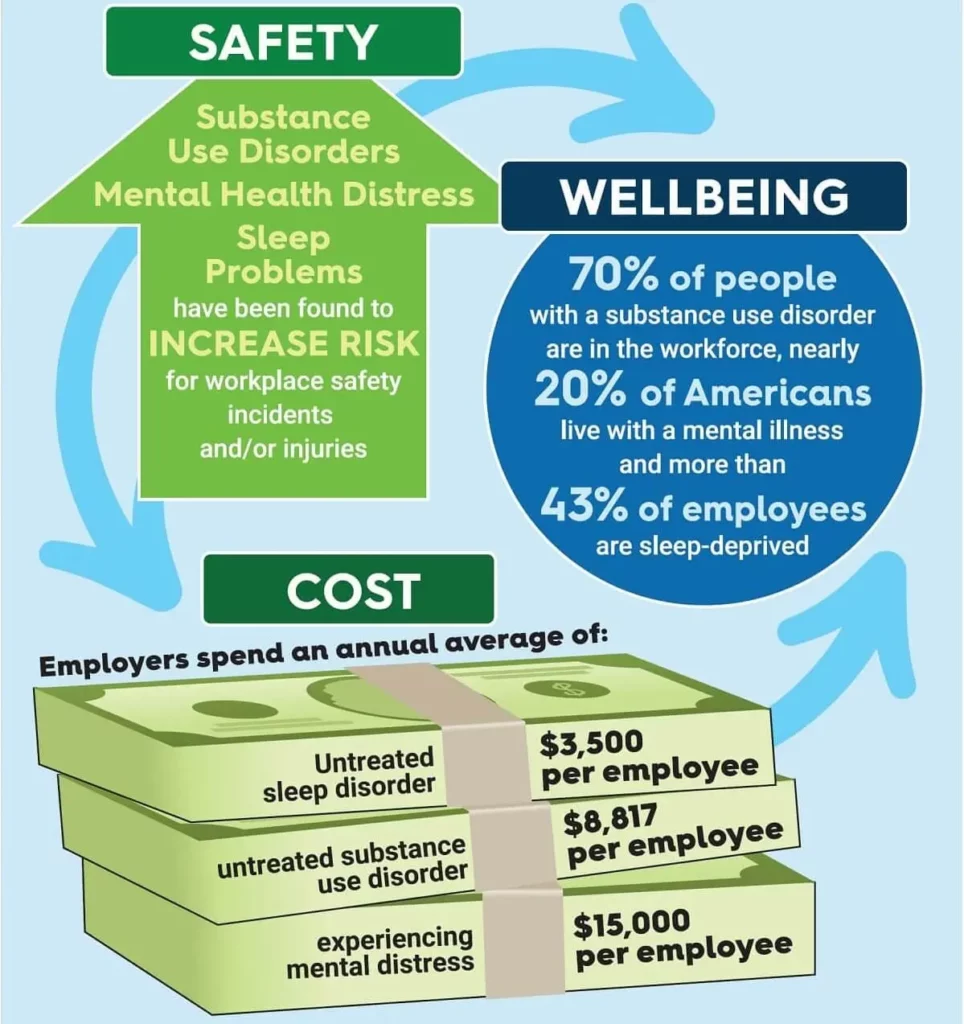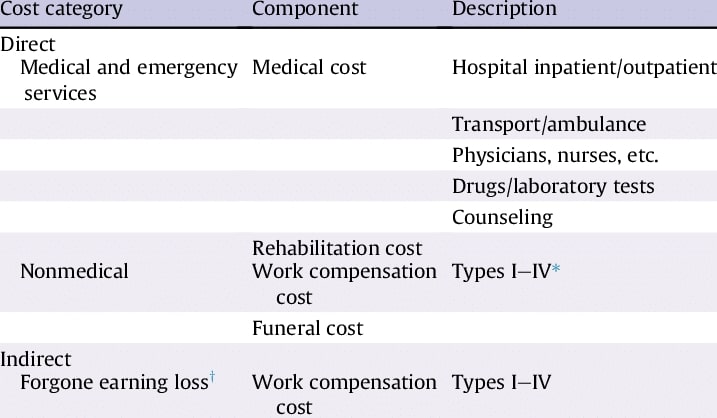Let’s imagine a construction worker, a seasoned veteran of countless projects, suddenly falls several stories, sustaining severe injuries. Medical expenses accumulate quickly, adding strain to both the worker and the employer, including rising employee health insurance costs. This scenario, while hypothetical, paints a very true picture of the potential consequences of workplace injuries.
In the United States, such incidents are far from rare. A study by the National Safety Council estimated that the total cost of work-related injuries in 2022 was $167 billion. But while financial losses are indeed a major concern, it’s important to recognize that the cost of workplace injuries goes much deeper. This blog post will examine both the direct and indirect costs of workplace injuries. By understanding the full scope of the problem, we can develop comprehensive workplace injury management solutions that protect both workers and businesses.
Understanding the Cost of Workplace Injuries
Workplace injuries are complex and often underestimated because the expenses are both tangible and intangible. When we talk about the cost of workplace injuries, it’s easy to fixate on the monetary figures. After all, these incidents can lead to significant expenses for medical care, workers’ compensation claims, and legal fees. However, reducing the issue to mere numbers overlooks a critical aspect: the human cost of a workplace injury.
The Financial Cost
The financial impact of workplace injuries is substantial. According to OSHA, employers pay almost $1 billion per week for direct workers’ compensation costs alone. These direct costs include medical expenses, rehabilitation, disability payments, and legal fees. In industries with higher risks of injury, such as construction, the costs can be even greater. For instance, a study by the Workplace Safety and Insurance Board found that the average cost of workplace injury of a single lost time on a construction site is $35,000, with many cases exceeding that figure due to litigation, extensive medical care, and ongoing compensation. Addressing lost time injuries effectively is crucial to reducing both direct and indirect costs associated with workplace accidents
The Human Costs
Every workplace injury represents a disruption in a person’s life, potentially leading to pain, suffering, and long-term physical or psychological consequences. A construction worker with a broken leg isn’t just a statistic; they’re a person whose livelihood, well-being, and future have been compromised. Research supports this notion. Studies have shown that workplace injuries are associated with increased rates of depression, anxiety, and post-traumatic stress disorder (PTSD). These mental health conditions can have a lasting impact on an individual’s quality of life, often requiring ongoing therapy and medication.

Types of Costs Associated with a Workplace Injury
Direct Costs
These are the immediate, tangible expenses that arise from an incident. They typically include:
- Medical Expenses: Costs associated with emergency care, hospitalization, surgery, medication, rehabilitation, and ongoing treatment. These expenses can quickly escalate, especially for severe injuries.
- Workers’ Compensation Payments: Financial benefits provided to employees who are injured on the job. These payments typically cover medical expenses, lost wages, and disability benefits.
- Liability Claims and Indemnity Costs: Legal fees and settlement costs associated with lawsuits filed by the injured worker or their family.
Indirect Costs
These are the less obvious, but no less significant, costs. They can be more difficult to quantify, but their impact on a company’s bottom line can be substantial.
- Lost Productivity: The decreased output resulting from the injured worker’s absence, reduced work hours, or diminished capacity upon return to work.
- Hiring and Training Replacement Workers: Costs associated with recruiting, hiring, and training new employees to fill the void left by the injured worker.
- Investigation and Administrative Expenses: Costs incurred for investigating the incident, filing reports, implementing corrective actions, and managing insurance claims.
- Property Damage or Equipment Repair: Expenses for repairing or replacing damaged equipment, tools, or property resulting from the injury.
- Increased Insurance Premiums: Higher insurance rates due to a history of workplace injuries, impacting the company’s long-term financial stability.
- Decreased Morale and Increased Absenteeism: The negative impact on employee morale, leading to increased absenteeism, decreased engagement, and potential turnover.
- Negative Publicity and Reputation Damage: The potential for negative media coverage and public perception, affecting the company’s brand image and ability to attract customers or skilled workers.

Workers’ Compensation Challenges and Workplace Injury Costs
Workers’ compensation is a system designed to protect employees and employers in a workplace injury. It provides financial support to injured workers for medical expenses and lost wages, while also shielding employers from potential lawsuits. However, the system is not without its challenges.
Disputes over the cause of an injury, the extent of disability, and the appropriate compensation can lead to lengthy legal battles, driving up costs for both parties. Another challenge is the lack of focus on early intervention and return-to-work programs. Injured workers may face delays in receiving necessary medical treatment, and there may be limited support for their return to the workplace. This can prolong recovery times, increase disability payments, and ultimately lead to higher costs for employers.
As Michael Russo from JobSiteCare explains when discussing workers’ compensation risk management:
“The issue with many workers’ compensation cases ties back to the first week after the injury occurred. Did the worker receive immediate care and treatment? Were referral and follow-up appointments easy to schedule and attend? Was there clear communication amongst all stakeholders? Excessive delays and a lack of communication can lead to the worker feeling lost in the process and will ultimately become disengaged and non-compliant with the recovery plan.”

How to Control the Financial Impact of Workplace Injuries?
To effectively manage and minimize both the financial and human costs of injuries, businesses should consider implementing the following key components:
1. Establish a Workplace Safety Program
Implementing a detailed safety program is the first step in reducing workplace injuries. Thoroughly assessing risks, providing comprehensive employee training, and using data to analyze trends can significantly lower the chances of accidents. Working with health and safety professionals who understand OSHA regulations, like those at JobSiteCare, ensures that workplaces meet the highest standards of safety in the workplace.
2. Have a Rapid Response Plan
Even with the best preventive measures, injuries can still occur. That’s why it’s important to have a plan for quick action. Having a well-established workplace injury response procedure ensures everyone understands and is ready to take the correct steps immediately in the event a worker needs help.
JobSiteCare’s telemedicine and onsite healthcare solutions can greatly enhance your response procedure by providing injured employees with immediate attention from the moment of injury.
3. Consult With Experts
Dealing with workers’ compensation and workplace safety regulations can be difficult. Seeking guidance from experienced professionals, like JobSiteCare, who have a proven history of reducing workplace injuries and improving employee satisfaction, can be invaluable. By proactively seeking expert advice, businesses can better prepare themselves to handle workplace injuries efficiently and effectively, minimizing both the economic and the human cost of workplace injury.
Conclusion
The true cost of workplace injuries extends far beyond financial spreadsheets and medical bills. It’s about disrupted lives, lost potential, and the ripple effect on families and communities. By acknowledging the breadth of these costs—both monetary and human—we can shift our focus from mere reaction to proactive prevention.
At its core, having an effective injury management system is an investment in the well-being of your best asset—your workforce. JobSiteCare provides a unique suite of workplace injury solutions that can help you transform this commitment into tangible results.
Contact us to find out more.
Frequently Asked Questions
What is the impact of OSHA fines on workplace injury costs?
OSHA fines add a layer of financial burden to an already costly situation. Beyond covering medical bills and potential legal fees, companies face direct penalties for non-compliance. However, while these fines can seem punitive, the ideal goal is for them to act as a catalyst for change, pushing companies to reassess their safety practices to avoid future incidents and their associated costs.
Do body part injuries affect the cost of workplace injuries?
The location and severity of an injury can dramatically influence the associated costs. Injuries to vital areas like the head, neck, or back often necessitate more extensive medical intervention, prolonged recovery periods, and potentially larger workers’ compensation settlements.
How do workplace injuries affect families financially?
Workplace injuries can create a ripple effect of financial hardship for families. Lost wages due to time off work are a major factor, compounded by medical bills not covered by insurance, travel costs for treatment, and the potential need for additional caregiving or household assistance.
How does business reputation damage affect the economic outcome post-injury?
A tarnished reputation following a workplace injury can lead to customers to turn to competitors with stronger safety records, making it harder to attract new business. Additionally, the company may struggle to recruit new skilled workers who prioritize safety. This loss of trust can translate to decreased revenue, hindered productivity, and a longer road to recovery for the business.


